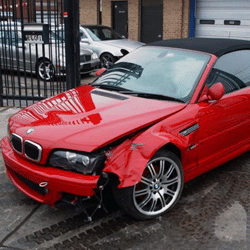All cars run on wheels; that much is obvious. But outside of the tires themselves, not too much attention is paid to proper wheel care and maintenance.
If left unmaintained and uncared for, a car’s wheels are bound to skew out of alignment. This is when either the front or rear wheels are not perfectly parallel to each other.
A misaligned set of wheels can drastically affect a driver’s ability to control a car. It also makes the vehicle less fuel efficient, degrades the life span of your tires, and makes your car even more prone to accidents on the road.
If you want to make sure your car is in tip top shape, you’ll need to be able to identify if your car is need of wheel alignment.
Main Causes for Your Wheels to Lose Alignment
It’s normally recommended to have your car’s wheel alignment checked every six to eight months, but any number of factors can cause your wheels to lose alignment. Here are some of the most common reasons:
• Collision and Accidents – You don’t need a high speed accident or a car on car collisions to offset your car’s wheel alignment. Sometimes all you need Sometimes the damage can be so severe that, on top of any further damage to the car, the vehicle can be near uncontrollable. However,
• Rough Roads – Rough roads and off-road driving can easily take your wheels out of alignment, especially if your car isn’t built for that kind of terrain. Make sure to realign your wheels if you have any plans of doing any rough road driving again.
• Wear and Tear – Like any mechanical system, the wheels of your car need regular maintenance and adjustment. Years of unsupervised and unmaintained driving can easily wear down the alignment of your car’s wheels.
The On Road Alignment Test
An easy way to check the alignment of your wheels is to conduct an on-road alignment test. The test itself is pretty straight forward and can take as little as a few minutes of your time.
1. Check Your Air In Your Tires
It’s important to check that all your tires are properly inflated. This is to rule out the possibility that any discrepancies in driving is simply caused by deflated tires.
2. Take Your Car to a Long, Empty and Flat Stretch of Road
Since you’re going to be testing out how well you can control your car, it’s important to try it on a long, empty stretch of road. It doesn’t have to be too long. Sometimes as little as a quarter of a mile will do, if not less. But be sure the road is even to make sure your car isn’t veering left or right due to the incline of the terrain.
3. Take a Slow Steady Drive
Cruise your vehicle forward and take notice if your car is veering either to the right or left of the without you aiding it. Remove your hands from the wheel for a few seconds but don’t drive faster than a slow 20 to 25 mph. If your steering wheel is perfectly center and your car isn’t moving in a straight line, your car is in need of realignment.
Bear in mind that this isn’t a definitive test. A set of wheels can be misaligned without having any discreet effect on your driving capability. But if left unattended, the alignment of the wheels will only degrade further. Remember to have your cars realigned by a car care professional to get the best, most lasting result.




 Follow
Follow

